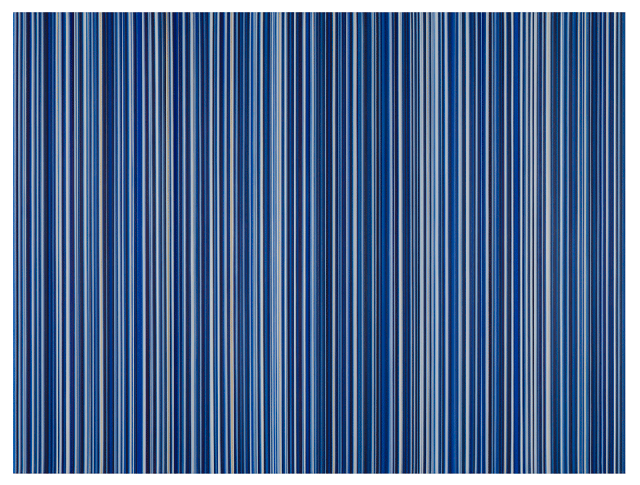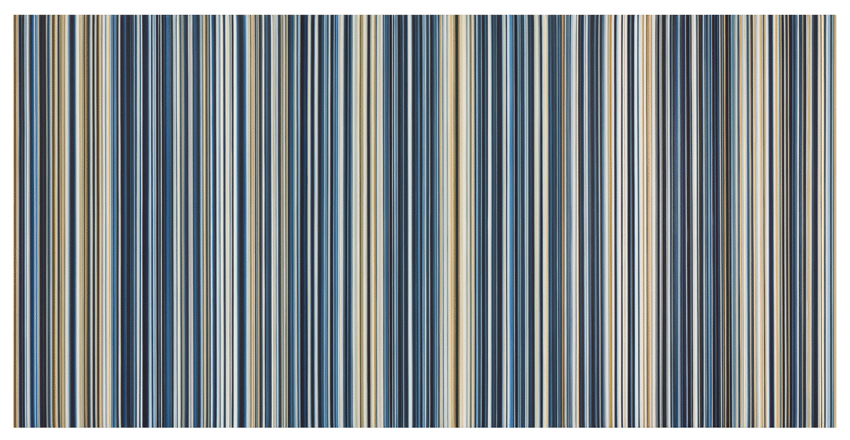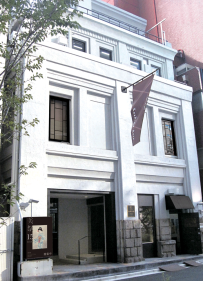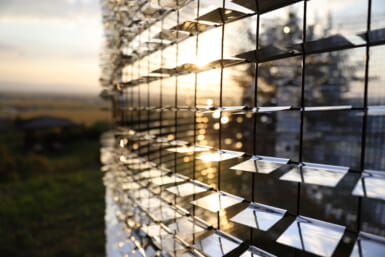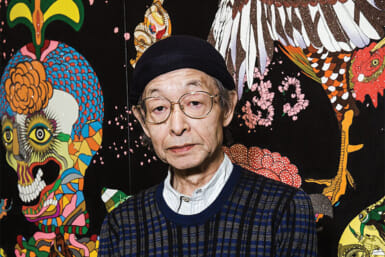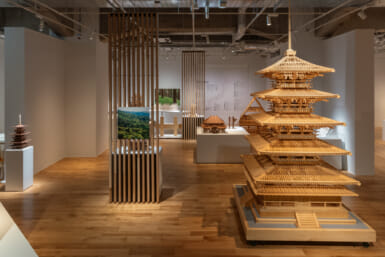As she sat in a calm coastal environment, attempting to depict the incoming waves for a seascape, Cornelia Thomsen’s frustration was growing. Try as she might, the East German-born artist just couldn’t seem to get it right. It was then that she had a moment of inspiration.
“I started out painting the ocean in a naturalistic way but was dissatisfied with the result,” she tells Weekender. “I found a solution by taking the impressions I experienced from sketching this natural scene and translating them into lines, concentrating on the colors.”
That was back in 2008, the year Thomsen began working on the stripe motif. Since then she has produced a variety of striking artistic compilations, including both abstract compositions as well as realistic portraits of prominent East German officials, yet it is her collection of vertical-line paintings for which she has become best known.
She usually begins by applying layers of paint to a canvas, which she leaves to dry for around two weeks, working on other paintings and then returning to the original canvas to add further layers. The meticulously drawn lines range from a millimeter to two centimeters across. Yet, “the width of the stripes,” she tells us, “has no particular rationale and is based purely on intuition.” She paints the lines horizontally but displays them vertically once a canvas is completed.
“I didn’t want to show horizontal stripes as they would still carry the memory of a seascape, so I went with vertical stripes which allowed me to create purely abstract images, focusing on the basics of line and color,” says Thomsen.
It’s a technique that has worked well. Her stripe paintings have been extremely well received by critics and even led to comparisons with renowned artists such as Gene Davis, the man responsible for the famed “Franklin’s Footpath” in front of the Philadelphia Museum of Art, or National Medal of Arts recipient Agnes Martin. Whilst undoubtedly flattered by these comparisons, Thomsen doesn’t necessarily agree with them.
“Of course it is an honor to be mentioned in the same breath as such illustrious artists,” she says. “My stripes, however, have a different origin and are painted in a different way. For example, Davis and Martin used tape to separate the colors, but I don’t; I paint gradations of color. Consequently I don’t think we are that alike.”
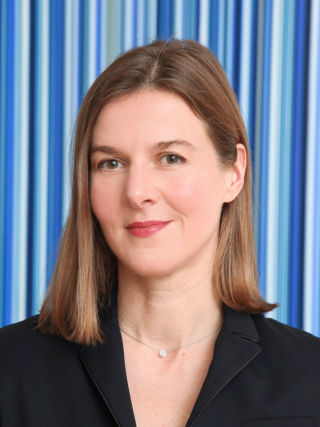
Cornelia Thomsen was born in Rudolstadt, East Germany in 1970. Unable to leave the country until she was 19, she says her “upbringing was shaped by the many restrictions placed on the people by the government.” She went on to paint at the famed Meissen Porcelain Company in Meissen, Germany. Her first solo exhibition took place in New York in 2005. She has had three books published: “Stripe Paintings,” “Works on Paper,” and “Stripes and Structures.” She currently resides with her husband and three children in Manhattan, New York.
American art critic Robert C. Morgan feels the same way. In his article “Tactile Sensations, Borrowed from Nature,” written for the art and culture website Hyperallergic, he commented that Thomsen’s education in Germany “allowed her to evolve in a more qualified direction, as opposed to the kind of fashionable quantifications to which American higher art education has finally succumbed.” Consequently, he believes that comparisons with other American stripe painters of the late 1950s and 1960s “just don’t work.”
Describing Thomsen as a “highly original hard-edge painter and soft-edge draughtswoman,” he advises audiences “to get close (to her paintings), then move back slowly,” in order to fully appreciate them. This June, Tokyoites will have an opportunity to do just that as Thomsen will be displaying her “Stripes” and “Structures” collections at Kashima Arts in Kyobashi.
The “Structures” section will provide visitors with an experience that contrasts with the “Stripes” but is no less captivating. A series of delicately constructed monochrome ink hatched markings made using a pen nib continually dipped into an inkwell, these drawings magnificently showcase the German’s acute attention to detail.
“I was trained at the Meissen Porcelain Company for four intensive years and use the skills I learned there to realize the ideas I express today,” she tells us. “I made my first ‘Structure’ drawings about ten years ago while thinking about works in which every mark has its place in a system. The lines do not cross or touch each other and stand alone, yet they create a whole.”
Thomsen’s passion for art was evident from a young age. Visiting Baroque castles during her youth, she was inspired by the paintings of such masters as Dürer, Rembrandt, and Lovis Corinth. These days it’s names like James Turrell, Frank Stella, and minimalist sculptor Richard Serra that grab her attention. She’s also become an avid follower of Asian art thanks to her husband, Erik Thomsen.
“My husband is Danish, but he actually grew up in Japan and has been dealing in art from this country since 1981,” she says. “I met him 20 years ago and since then I have been surrounded by Japanese art, which hones my appreciation of finesse and beauty as well as asymmetry and imperfection. One particular artist who stands out for me is calligrapher Yuichi Inoue. The confidence and strength of his characters is very impressive.
“This will be the first time showing my work in Japan,” she continues. “I am really excited about it. I hope to meet people who are interested in contemporary art. My ‘Stripes’ paintings have a strong presence and a three-dimensional effect that can only be perceived in person; my ‘Structures’ drawings are so minute that small printed reproductions cannot fully convey their character.”
Kashima Arts Gallery
Kashima Arts Gallery is located in Kyobashi, just a short walk from either Tokyo Station or the Ginza area. The building dates back to 1927, while the interior reveals a mix of modern Japanese aesthetics alongside a very traditional tea room, where you can enjoy Japanese culture with the senses.
They are known for their high quality collections of traditional Japanese painting and calligraphy from the Edo period up to the present day, including works by the renowned artist Ito Jakuchu. Also, they recently have started showing works of contemporary artists that the owner carefully selects, based on his aesthetic sense sharpened in dealing with old Japanese paintings.
In order to help foreigners to better understand Japanese arts and culture, they have English speaking staff in the gallery as well as experts to explain about works in detail. A luxurious space that takes a twist on the typical museum experience, Kashima Arts offers a unique experience.
Cornelia Thomsen at Kashima Arts
Dates: Sat., June 6–Sat., June 20 (Open 10 am–6 pm)
Address: 3-3-2 Kyobashi, Chuo-ku, Tokyo 104-0031
Web: www.kashima-arts.co.jp/en/events/stripes_structures/index.html
Tel: 03-3276-0700
Admission: Free
Sponsored Post

